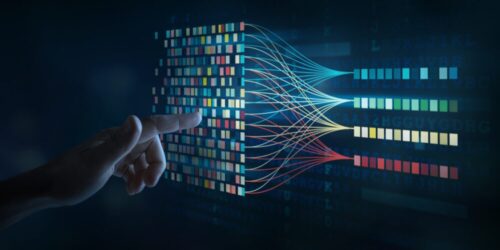
4.3.24 – SSI – Peter Giacalone
Given how much hype and attention AI has had recently in so many ways, it can be hard to differentiate what’s real from what’s not.
Over the past few years — and especially this past year — the term “AI” has become one of the most discussed (and possibly most misunderstood) of our time.
Artificial intelligence, or AI for short, has had a lot of hype on so many levels and on countless channels. Given the stated power of the new capabilities that its use enables, it is no wonder that so many are compelled to learn more and even engage.
Because of all this buzz, it’s often hard to differentiate what’s real from what’s not. Every company nowadays claims to have some sort of AI. But what does it mean for the security industry?
At the highest level, there are two main types of AI: “Narrow AI” (an AI that is trained to solve one specific problem as accurately as possible) and “General AI” (an AI that can solve any generic problem and can think critically and reason about any topic like a human would).
Almost All Applications are Narrow AI
All mainstream applications of AI today are Narrow AI, no matter how much they may look like General AI.
For example, ChatGPT can take any written textual input and generate human-like text responses to the prompt. However, ChatGPT is a subclass of AI called “Generative AI,” which is trained on an input dataset (i.e., all text that humans have written on the internet) and taught to do a specific task (i.e., respond to a text input with a relevant text output).
ChatGPT appears at first glance to be General AI but lacks the generic reasoning necessary to garner that distinction. Instead, it’s most accurately classified as Narrow AI.
As of today, a true General AI has yet to be created. However, we have been able to solve a lot of real-world problems with Narrow AI. Internet search is amazingly accurate; your navigation directions and ETA to destination are accurate within minutes; self-driving cars are starting to reach a threshold of being nearly as safe as (or even safer than) human drivers; and, perhaps most importantly, through a variety of available tools, we can generate pictures of some really strange things that don’t actually exist.
There are also some really important applications of Narrow AI in the security industry.
Particularly Compelling Applications
Here are a few security industry applications that are particularly compelling:
Facial recognition in video: This is, to date, one of the best applications of narrow AI in the security industry. As of today, it still has some key real-world limitations, but we expect improvements to continue to open new opportunities for its application.
Object recognition in video: Having a computer “watch” a video and be able to identify which specific objects are in the video (e.g., animal, person, vehicle, weapon/gun, open door, closed door, fire, smoke) is an extremely valuable capability for security.
Optical character recognition (OCR) in photos and video: Being able to tell from a photo what text is in the field of view (i.e., being able to automatically read a license plate) has been revolutionary for many security applications.
Considering Audio Recognition
Speaker/voice recognition in audio: This opens the door to many interesting applications. Speech-to-text has existed for quite a while, but some companies are making advancements in their capacity to detect who is speaking based on their voice.
- Detection and identification of common sounds (e.g., the ability to automatically detect a gunshot, glass breaking or another event of interest that emits a lot of sound) is hugely powerful.
- Interestingly, many voice-recognition platforms and facial-recognition platforms face many of the same challenges (e.g., accuracy of the technology, privacy concerns, the need to have a monitored area completely blanketed in the technology in order to realize its benefits).
Anomaly-Detection AI Applications
Anomaly detection: This is a broad term with many potential applications, but there are a few key examples in the security industry that jump out.
- Anything that can be measured over time and plotted on a line chart can be trained into an anomaly-detection model. Computers are capable of noticing regular patterns in the behavior of critical metrics and alerting you if there are major deviations from patterns that have been seen in the past. Applications include predictive maintenance on critical security equipment, crowd behavioral patterns and temperature/humidity/noise fluctuations in a monitored area.
- Increasingly, novel presence-detection technologies are creating computer-readable insights about who is coming and going from a monitored premise. These behavioral patterns can train AI models to elevate new insights about normal and abnormal presence of devices and individuals in critical areas.
- Anomaly detection is also particularly useful in cybersecurity. “Normal behavior” and “normal access patterns” can often be quantified, and AI models then can tell you when there is access or behavior that looks abnormal. For instance, your number of “friend requests per second” on Facebook is an easily measurable quantity. Facebook regularly employs AI models to detect if an account is suddenly sending a far larger than normal number of friend requests. If so, it can automatically block that account and flag it as hacked/spamming.
Expect to hear a lot about this at ISC West in Las Vegas next week. I’ll be interested to hear what you think after talking to some of the brightest minds in the security industry.
Author’s note: It was essential that this article be accurate and on point. To that end, I consulted, and created this content in collaboration with, Joe Loftus and Mik Cox of Ubiety Technologies, Inc.
If you enjoyed this article and want to receive more valuable industry content like this, click here to sign up for our FREE digital newsletters!
About the Author
PETER GIACALONE

Peter Giacalone is President of Giacalone Associates, an independent security consulting firm.
